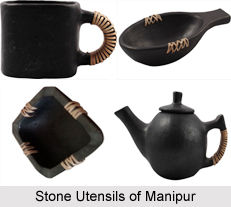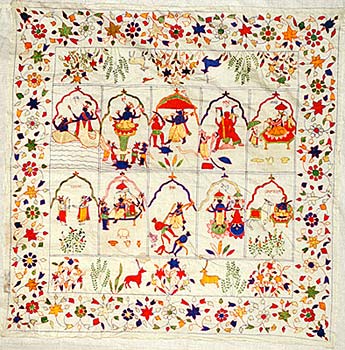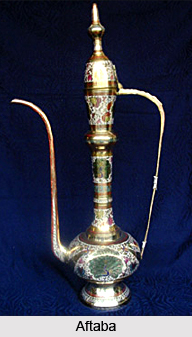 Phulkari crafts of Northern India are believed to be the products manufactured by some `Jat` tribes who settled mainly in Punjab, Haryana and several other portions of India. The term `Phulkari` implies flower working, and included embroidering various kinds of garments.
Phulkari crafts of Northern India are believed to be the products manufactured by some `Jat` tribes who settled mainly in Punjab, Haryana and several other portions of India. The term `Phulkari` implies flower working, and included embroidering various kinds of garments.
The word `phul` is obtained from the term flower, while `kari` implies craft, thereby imparting the name Phulkari to the ancient craft. Therefore Phulkari means floral craft. It is believed that the origin of Phulkari craft can be traced to Iran, from where it has migrated to India. Scholars are of the view that the Phulkari craft of Iran was known as `Gulkari`.
However, gradually, the techniques of Phulkari embroidery started to be restricted to headscarves (`odhanis`), shawls and `dupatta`, which are meant for regular use. Hindu scriptures like Mahabharata, Vedas, Guru Granth Sahib and some Punjabi folk songs have mentioned about the existence of Phulkari crafts.
 Phulkari Crafts of Punjab
Phulkari Crafts of Punjab
Numerous parts of Punjab boast of some of the best-known masterpieces of Phulkari crafts. Chakwal and Hazara are the areas of Northern Punjab which manufacture the most celebrated products of Phulkari. These portions constitute present-day Pakistan. There are certain garments which consist of Phulkari craft, which cover the entire body and are worn during festivals or special occasions. Such costumes are named `baghs`, meaning gardens. Punjab has been harbouring a tradition of gifting baghs to her brides, as per a traditional practise. Baghs and other costumes containing Phulkari crafts were worn extensively by a majority of Punjabi women during marriages and other significant ceremonies. The colours of garments utilizing Phulkari crafts vary between different regions of Punjab.
Phulkari Crafts in Western Punjab
Residents of Western Punjab are averse to black and blue colours, while white is not preferred by the people of Eastern Punjab. However, red is the most popular colour when it comes to Phulkari-embedded garments. Amongst Sikhs and Hindus, the colour red is considered the most auspicious of all colours. White, brown, black and blue are the other colours which are favourable for performing Phulkari crafts, in Punjab. Punjabi women are skilled artisans who manufacture excellent Phulkari crafts on clothes, or dupattas, or other costumes with expertise. Designs of Phulkari crafts in Punjab are mostly inspired from daily life, as well as complex geometrical patterns.
Types of Phulkari Crafts in Punjab
Phulkaris of Punjab are of two types, one carrying a regular row of stylized motifs either of flowers, fruits or birds and other carrying a rich repertoire of the folklore and motifs taken from everyday life. The centre often carries a stylized lotus form the two cross borders at the two cross borders at the ends carry rows of stylized lotus form, the two cross borders at the ends carry rows of stylized animals and bird forms, or flowers. The remaining surface is covered with a variety of motifs: a train on wheels carrying human forms, birds and animals rushing across the horizon, while peacocks move across the surface and strange mythical birds and animals mingle together in harmony.
Phulkari Crafts of Haryana
In Haryana, Phulkari art comprise motifs of human figures, flowers, birds or flowers, and are generally done on bright, colourful clothes. Phulkari work is woven in horizontal and vertical patterns, from the reverse side of the garment. Certain clothes employ Phulkari crafts on silk and satin textiles. Like Punjab, Phulkari-woven clothes also form one of the traditional costumes of the native women of Haryana. `Khaddar`, a coarse texture, is utilized as the basic material on which Phulkari crafts are woven.



















